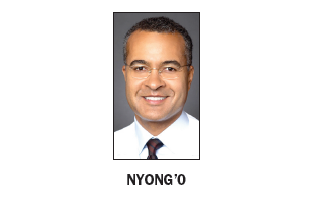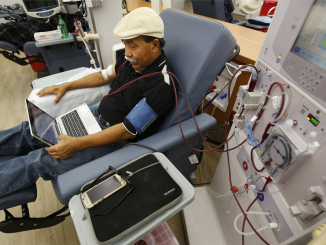
BY ALLISON LEVITSKY
Daily Post Staff Writer
Stanford Health Care leaders say that if the union-backed Measure F passes on Nov. 6, it could mean a $1 billion hit to the hospital’s $4 billion annual operating revenue — while SEIU-United Healthcare Workers West asks why a nonprofit hospital is sitting on $700 million in reserves.
The Palo Alto ballot measure would limit health care profits to 15% and would affect Stanford, Palo Alto Medical Foundation and smaller medical practices such as dentists and solo practitioner doctors.
The only medical practices that wouldn’t be affected are chronic dialysis clinics, children’s hospitals, free clinics, reproductive health clinics, VA facilities or facilities owned by a local or state government agency.
Providers would be required to issue a rebate or cost reduction on charges above 115% of the cost of direct patient care to those who pay for patient services.
In many cases, that means insurance companies would get rebates that they’re under no obligation to pass on to patients, meaning patient costs generally wouldn’t go down, according to Andy Coe, Stanford Health Care’s chief government and community relations officer.
SEIU spokesman Sean Wherley said the union wasn’t concerned that Palo Alto health care providers would move to neighboring cities because, he said, their customer base would keep them in town.
“Maybe their patients would like to know how much they’re being overcharged,” Wherley said, suggesting patients wouldn’t want to follow their medical providers anyway if they knew. “One of the goals of this is transparency. People go into a medical provider, a clinic — they don’t know how much they’re really being charged. It’s often handled by their insurance company.”
Layoffs and program cuts
Coe told the Post that a 25% hit would likely mean layoffs and program cuts. Wherley dismissed the warning as “scare tactics” by Stanford and that the union isn’t worried about workers losing their jobs, because of the hundreds of millions that Stanford has in its reserves.
The hospital employs 12,000 workers, almost 2,000 of whom are members of SEIU-UHW.
Former California Hospital Association CEO C. Duane Dauner, who now leads the No on F campaign committee, said that the measure is an act of retaliation against Stanford by SEIU-UHW for not giving in to the union’s demand for a neutrality agreement that would allow the union to freely recruit new members at their facilities in Redwood City, Emeryville, Pleasanton and Livermore without a response from Stanford.
The union’s motivation
Wherley denied that accusation and declined to say whether the union wants to be able to freely recruit at those facilities.
The city of Livermore, which will see a similar ballot measure next month, studied what it would cost for the city to regulate the new limit on costs. Livermore found that it would cost $750,000 to create such a city agency and $1.9 million a year to operate it.
Between Stanford Hospital and the Palo Alto Medical Foundation, which employs about 1,000 doctors, Palo Alto has more medical providers than Livermore does — meaning Palo Alto would likely have to spend more.




If Measure F passes, say goodbye to charity care. Stanford Hospital will stop doing Medicare and Medi-Cal cases. The hospital will stop writing off the hospital bills of the poor. SEIU is unknowingly killing something the benefits low- and middle-income residents.
scare tactics. Any business — and that’s what they are first and foremost — will provide you an estimate and can tell you up front how much they will charge. Only the hospitals don’t. Because their charges are obscene. Predatory and OBSCENE.